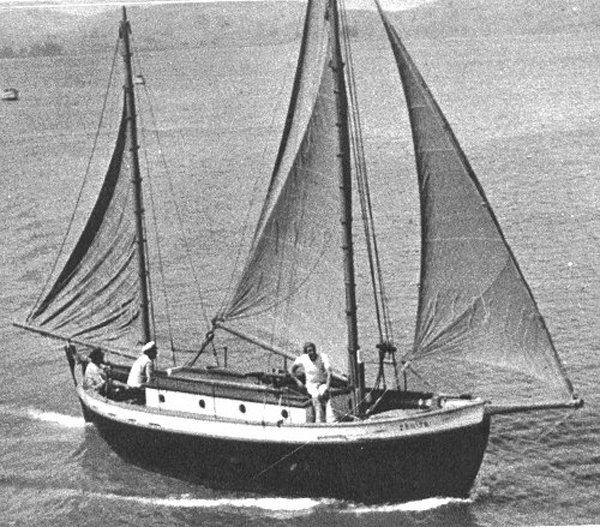Boat type selection - why the North Carolina Sharpie.
The New Haven and Noth Carolina sharpies, whether cat-ketch or schooner rigged, give the best bang for the buck in the history of sailing:
- very fast,
- very seaworthy
- and very cheap to build and maintain.
But, you protest, fast and seaworthy? Why, you wouldn't catch me sailing on the deep with a narrow, shallow-draft speedster. Give me Hanna's Tahiti Ketch. There's a nice reliable tub.
Except that they weren't - reliable that is. Tubs they were:
- Tubs that could not get out of their own way.
- Tubs that took a dangerously long time to make ocean passages.
- Tubs that heeled over instead of accelerating when hit by a gust of wind.
- Tubs that wallowed.
On the other hand:
"The sharpie's rapid spread in use can be accounted for by its low cost, light draft, speed, handiness under sail, graceful appearance, and rather astonishing seaworthiness. Since oyster tonging was never carried on in heavy weather, it was by chance rather than intent that the seaworthiness of this New Haven tonging boat was discovered. There is a case on record in which a tonging sharpie rescued the crew of a coasting schooner at Branford, Connecticut, during a severe gale[1], after other boats had proved unable to approach the wreck."
Below is our all-time favorite sailing photograph. It shows a cat-ketch-rigged North Carolina sharpie booming along, with one reef, in a moderate gale[2]. This particular sharpie was 42-45 feet long [Chapelle's estimate] with no cuddy. The North Carolina sharpie plans shown in Figure 9 is 42.5' long and has two small cuddies. It is also cat-ketch rigged.
The above photograph and quote were taken from the mysterious "Paper 25." Through an extraordinary piece of luck we are in possession of one of the two or three copies left "in the wild." To find Paper 25 just follow the links to the New Haven and North Carolina sharpies. All of Paper 25 is available on the feeble crew website except for those sections that had nothing to do with sharpies [Howard I. Chapelle was known to ramble a bit in his later years]. Figure 9 is also from "Paper 25."
Below, just for laughs, is a photo of the Hanna-designed Tahiti Ketch wallowing along. You don't think that it is wallowing? Look again. There is almost no wind and it is probably doing all of about three knots but look at the wake it is kicking up.

You could not find two ketches more different.

